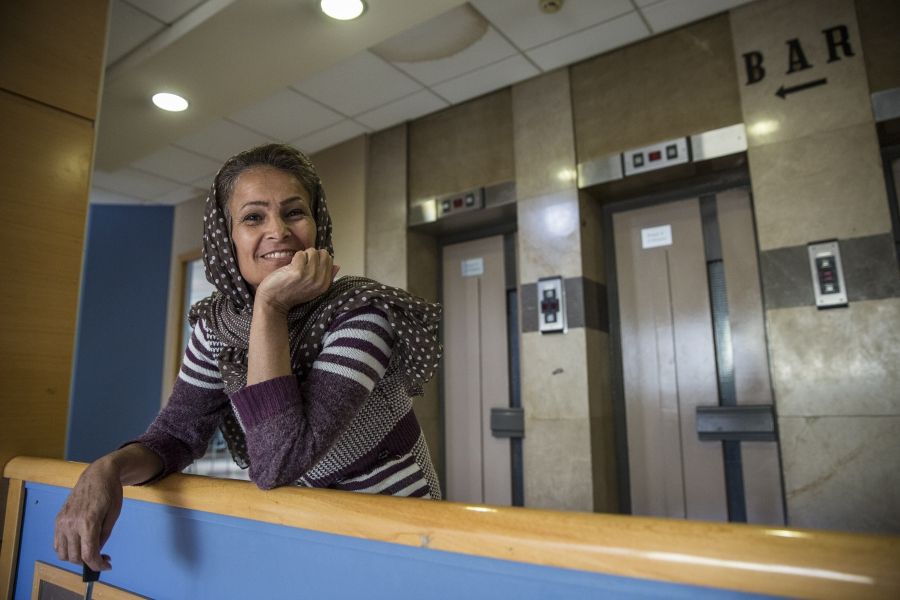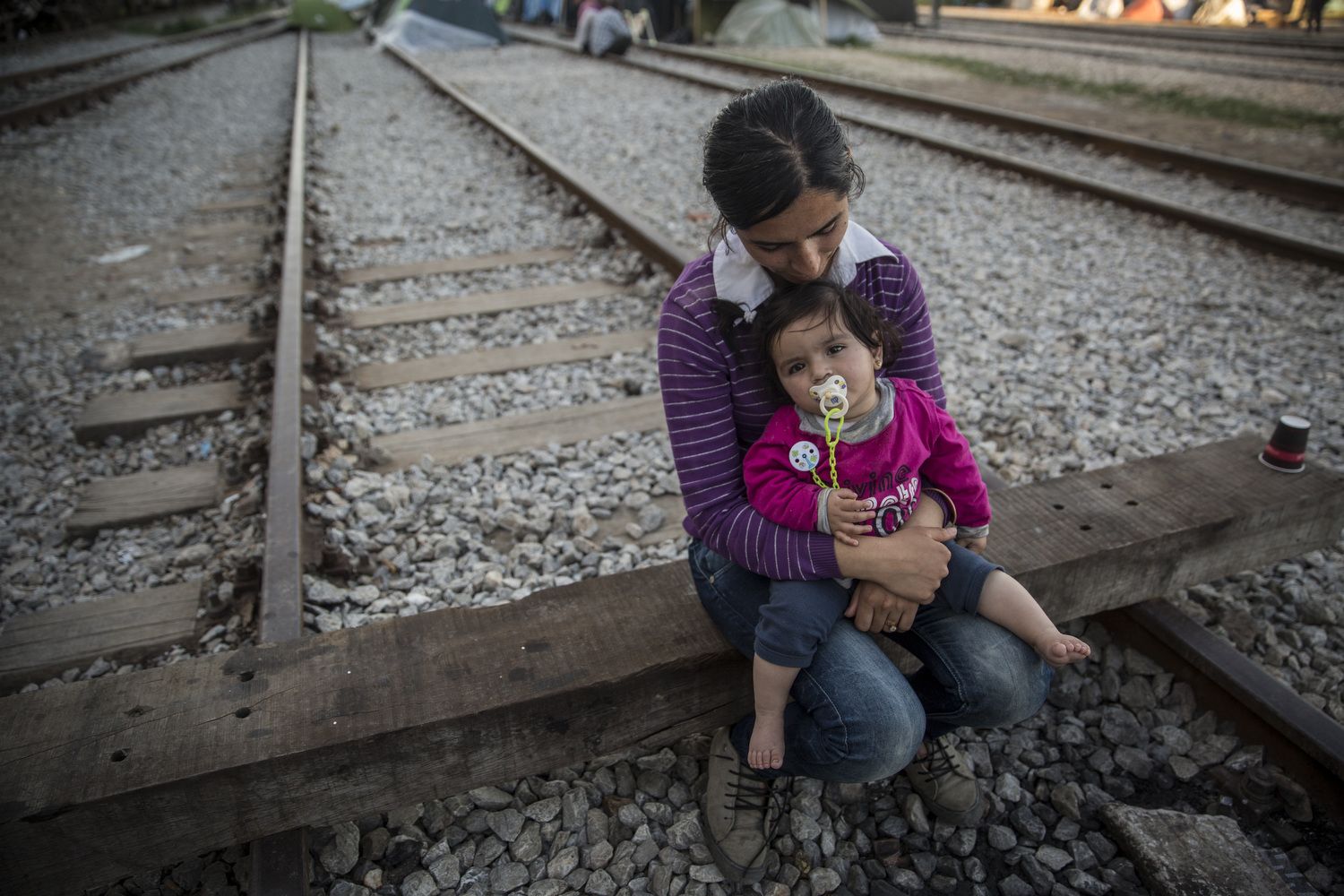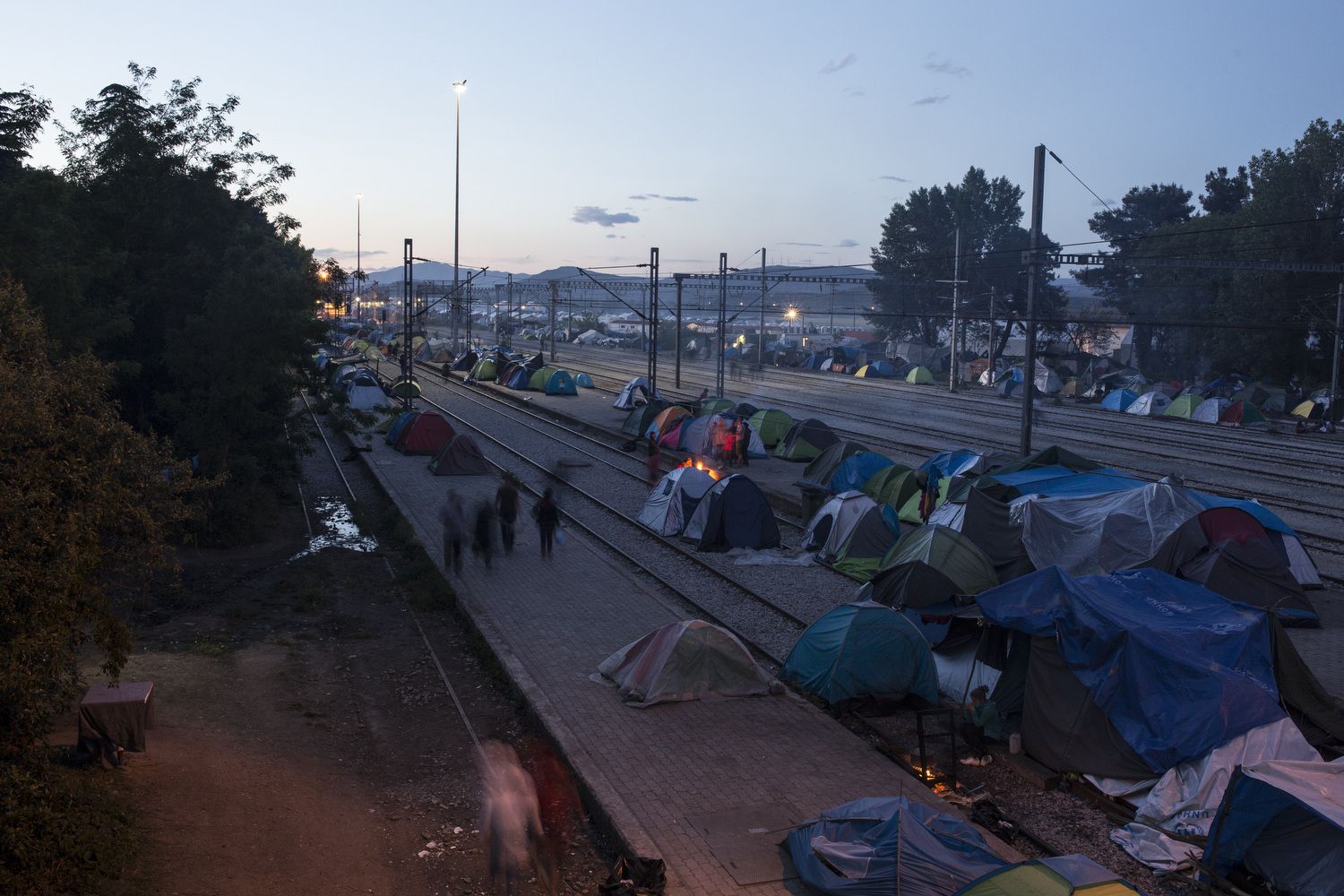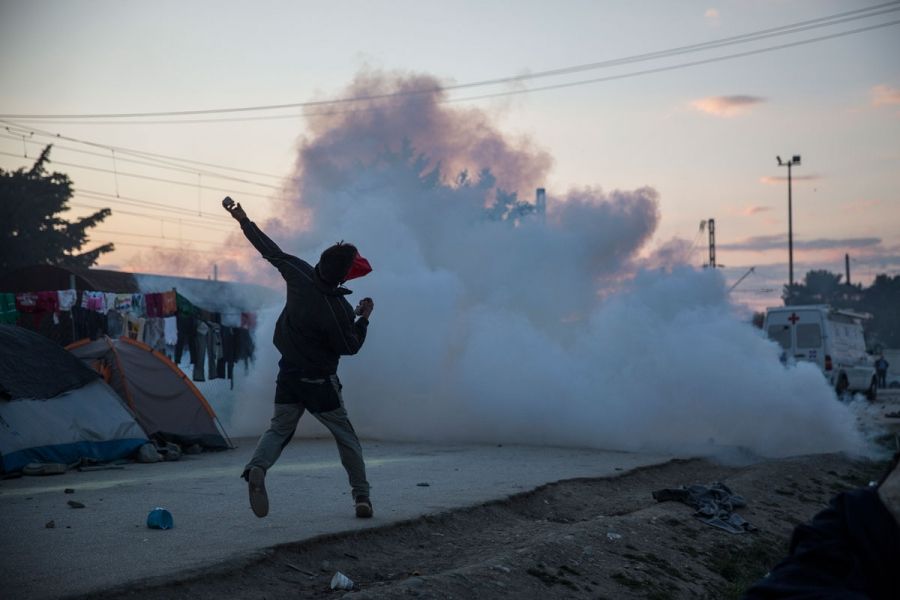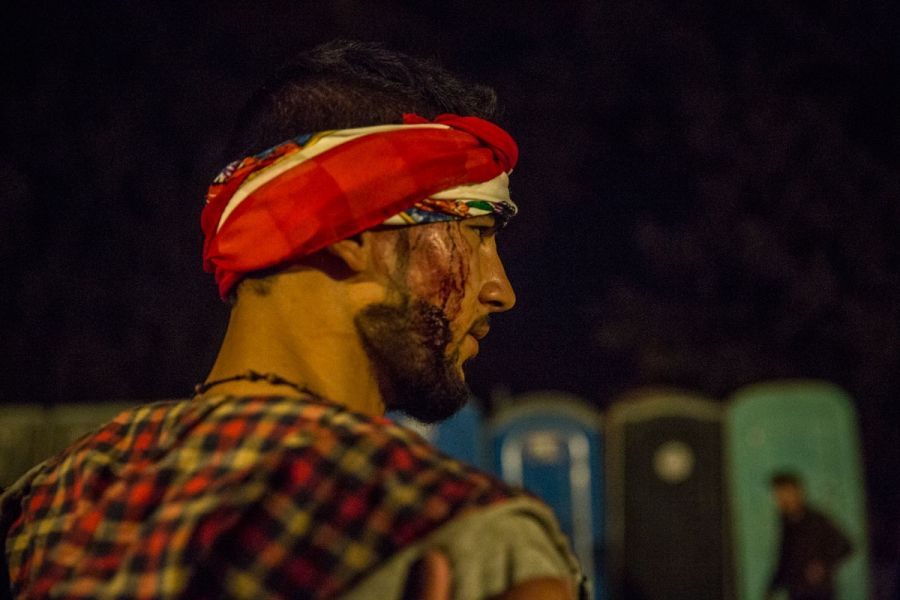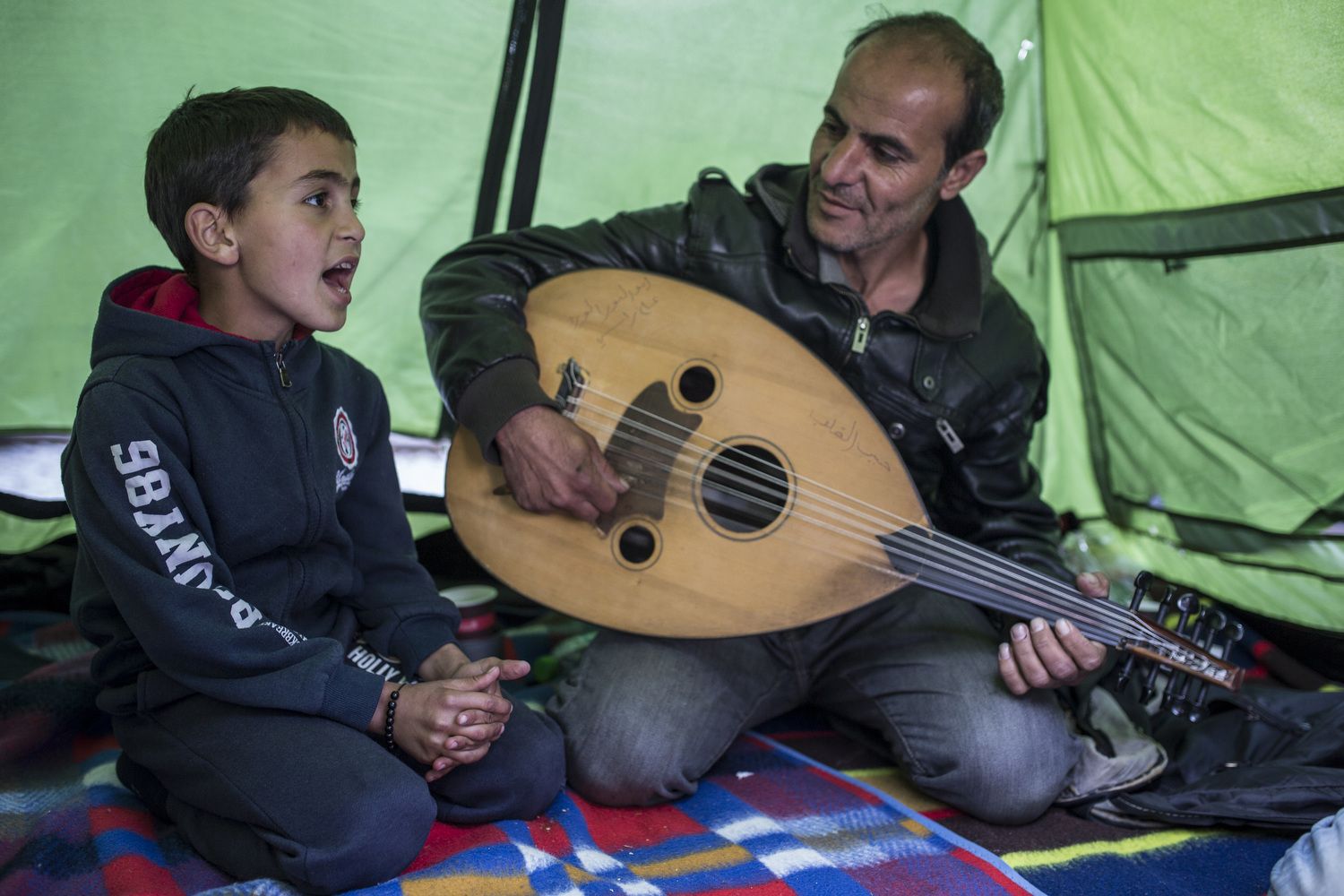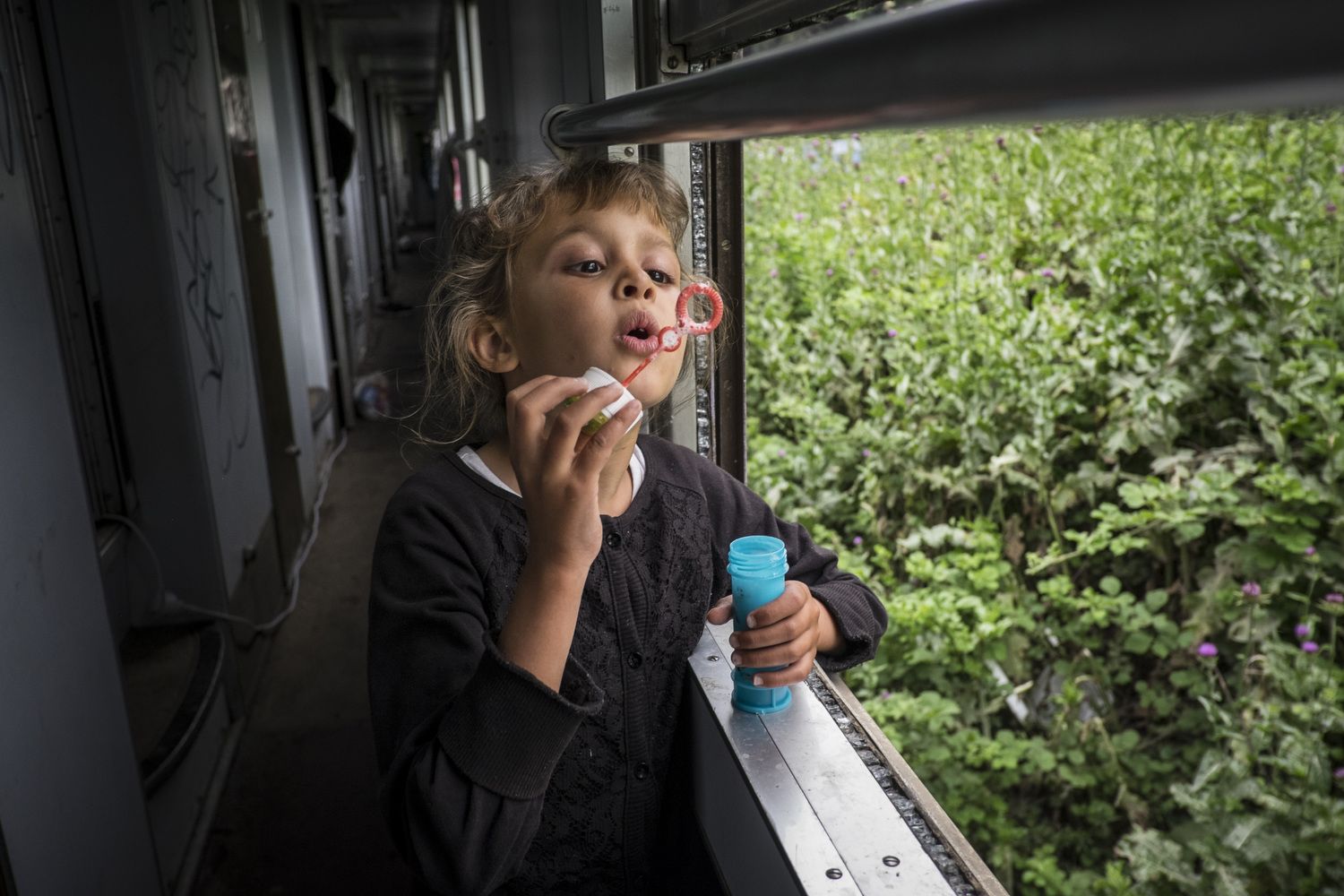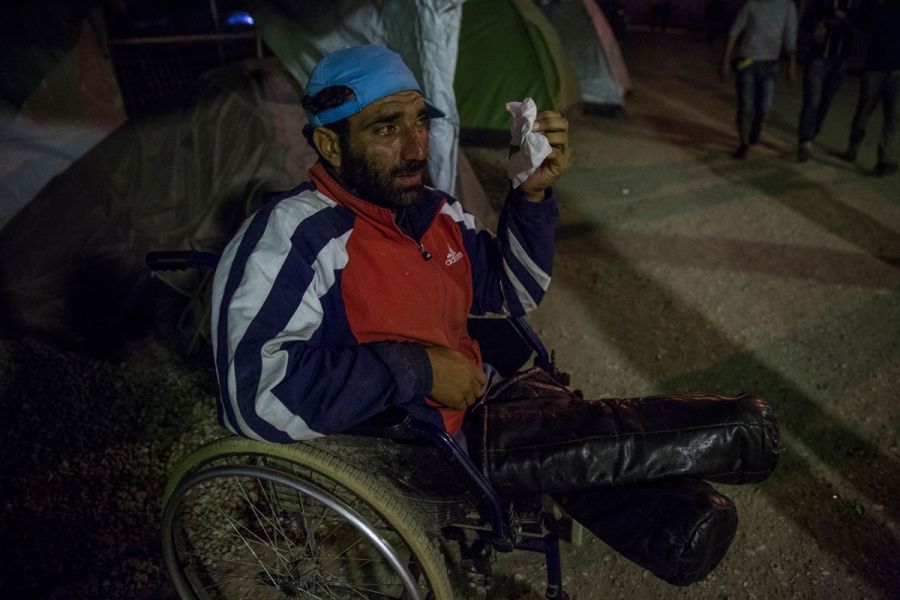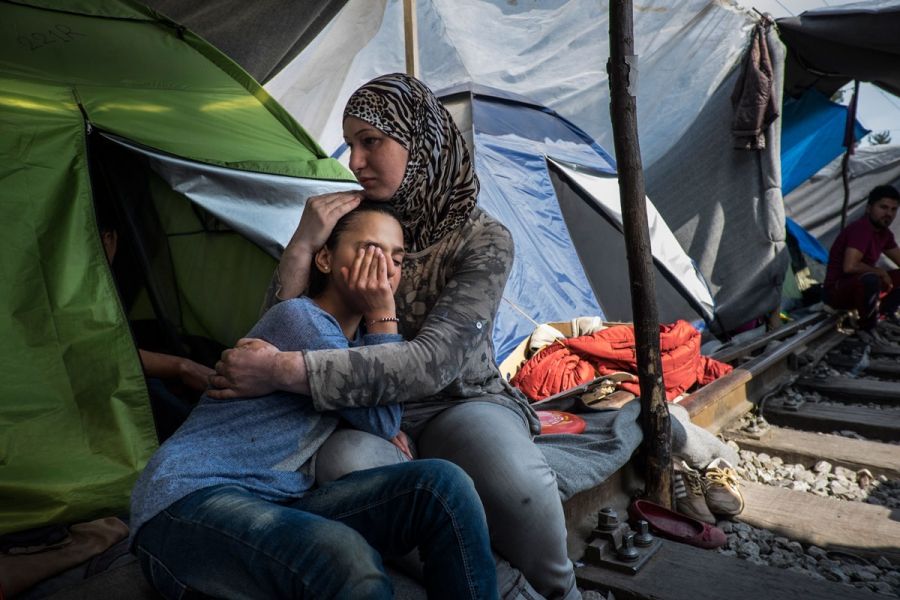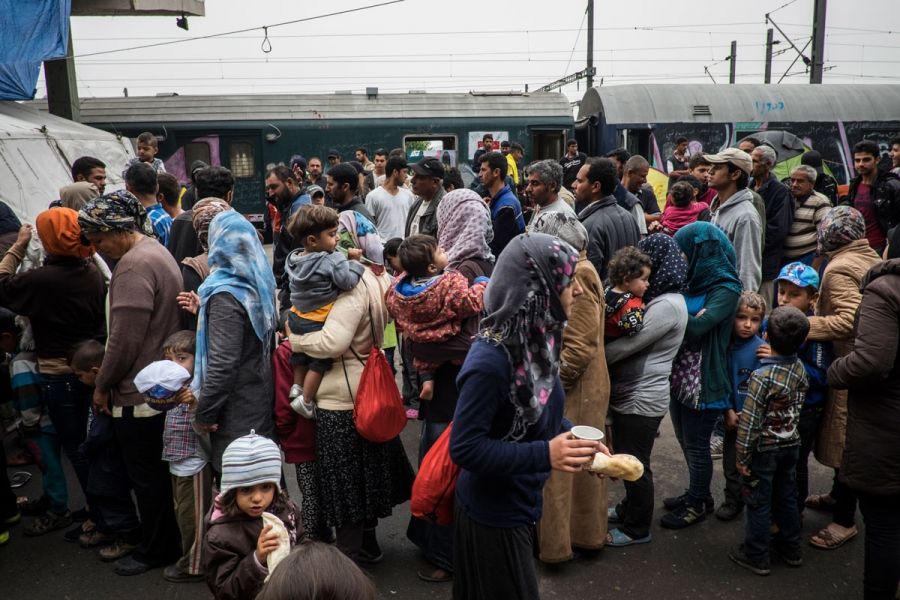Common Core Standards:
CCSS.ELA-LITERACY.RI.9-10.4: Determine the meaning of words and phrases as they are used in a text, including figurative, connotative, and technical meanings; analyze the cumulative impact of specific word choices on meaning and tone (e.g., how the language of a court opinion differs from that of a newspaper).
CCSS.ELA-LITERACY.RI.9-10.2: Determine a central idea of a text and analyze its development over the course of the text, including how it emerges and is shaped and refined by specific details; provide an objective summary of the text.
Objective:
You will be able to analyze how a journalist reporting on a refugee camp outside of Greece uses language to achieve different tones in order to create social media campaigns representing the experiences of refugees awaiting asylum in Europe.
Warm-up:
1. Look at the following images and answer the following questions for each photograph:
- What do you see in the picture?
- What do you think is happening in the picture?
- What questions do you have about this image?
- How would you describe the feeling expressed by the image? How do you think the photo evokes this feeling?

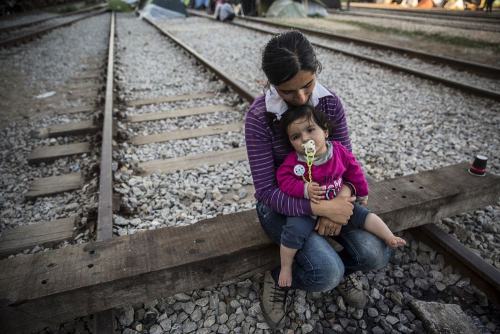
The photo above is part of the project “Surviving Fortress Europe” from journalists Jeanne Carstensen and Jodi Hilton.
2. Make a prediction about what you think the topic of this project will be. Then, check your response by reading the project description attached.
Introducing the Lesson:
Today’s lesson will explore how Carstensen and Hilton use language and photography to report on the lives of refugees attempting to relocate to countries in Europe. As you review the materials, analyze how language and images illustrate the lives of refugees in different ways.
Consider the following example of how language can be used to evoke a feeling:
- Why do you think the project is called “Surviving Fortress Europe?”
- Why do you think the author uses the work “fortress”?
- What is the feeling evoked by the author?
- What is the author trying to say about the experience of refugees trying to relocate to Europe?
Introducing Resource 1: "Trapped in Greece, These Refugees Wait, Just Before Another Frontier"
1. Look at the images from this resource. For each photo, write your response to the following questions:
- What do you see in the image?
- What is the feeling expressed in the image?
- How do you think the photographer achieves this feeling?
2. Read the article attached, listen to the audio and answer the accompanying questions.
- Identify at least three examples that illustrate the tone of the article.
- For example, what is the tone expressed by the following passage: “Two Afghan sisters pass fearful nights inside another train where they say men knock on the door at all hours. 'We don’t feel safe,' they tell me.”
- Why do you think the author uses the words “fearful nights?” What is the impact of the quotes from the sisters?
- Is there an image or moment from the audio that elicits a positive feeling? What moment and why?
Introducing Resource 2: "Protests, Violence and Tears at Unofficial Refugee Camp in Greece"
1. Look at the images from this resource. For each photo, write your response to the following questions:
- What do you see in the image?
- What is the feeling expressed in the image?
- How do you think the photographer achieves this feeling?
2. Read the article attached, listen to the audio and answer the accompanying questions.
3. How would you describe the tone of the article? Identify at least three examples that illustrate that tone.
Extension Activities:
1. Discussion: What is the world’s responsibility to refugees in Europe?
2. Using details from the articles you explored today, discuss the question above with your classmates. Consider the following as part of your discussion:
- What details from the resources resonated with you the most, and why?
- What do you think should be done to help refugees awaiting asylum in Europe?
- What might be the impact of continuing to keep refugees in camps on the border of Greece?
- Why might some countries resist admitting refugees?
- What might be some of the challenges and benefits to opening borders to refugees?
3. Using the information from the resources you explored, create a social media campaign that informs your community about the experiences of refugees awaiting asylum in Europe. You should write at least three tweets/Facebook posts/Instagram posts as part of your campaign. Experiment with tone as you create your campaign. Consider the following: How might you balance images/captions that elicit different feelings to help connect your audience to the lives of refugees?
The following lesson plan asks students to explore tone as they investigate resources that are part of the project "Surviving Fortress Europe" by Jeanne Carstensen and Jodi Hilton.
Lesson facilitation notes:
1. The lesson plan is written for students to be able to explore the resources and reflection exercises independently.
2. Students may need to have an extra sheet of paper, or a blank online document open, to answer the warm up, comprehension and extension questions.
3. The lesson lists several extension exercises. Students could choose one or work through all of the listed exercises.
4. The warm up and post-reading reflections in this lesson could also lead to rich conversations. If you are working through the lesson along with the students and would like to denote moments for interactive activities, click on "Modify this Lesson" to make changes to the student instructions.
5. This lesson can be sent to students electronically by clicking "share" once it is published. From the electronic lessons, students can access the Pulitzer Center reporting by clicking on the links under "Resources". When printing the lesson, the text from the resources will print after the student instructions.
6. With questions about this lesson, contact [email protected]
